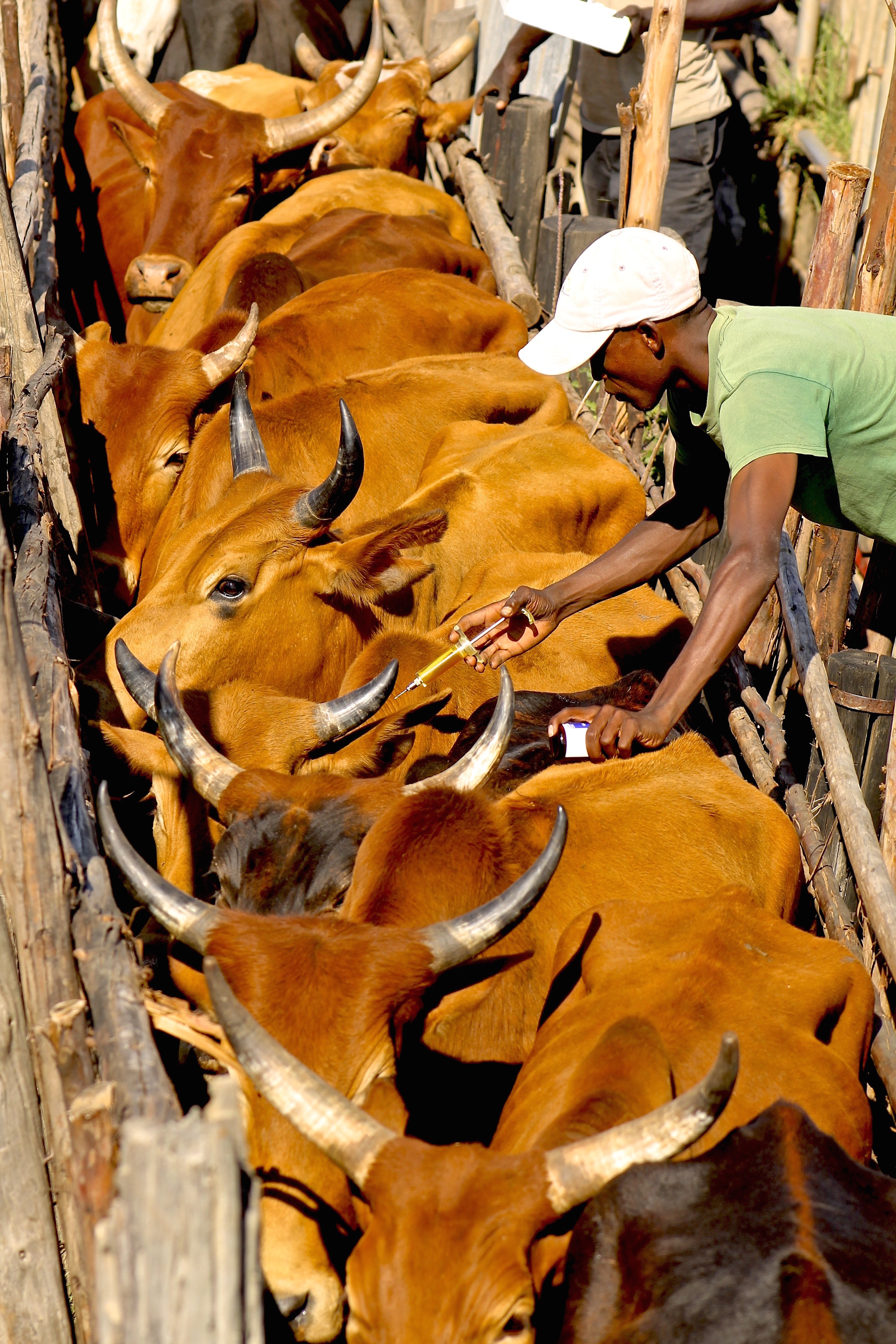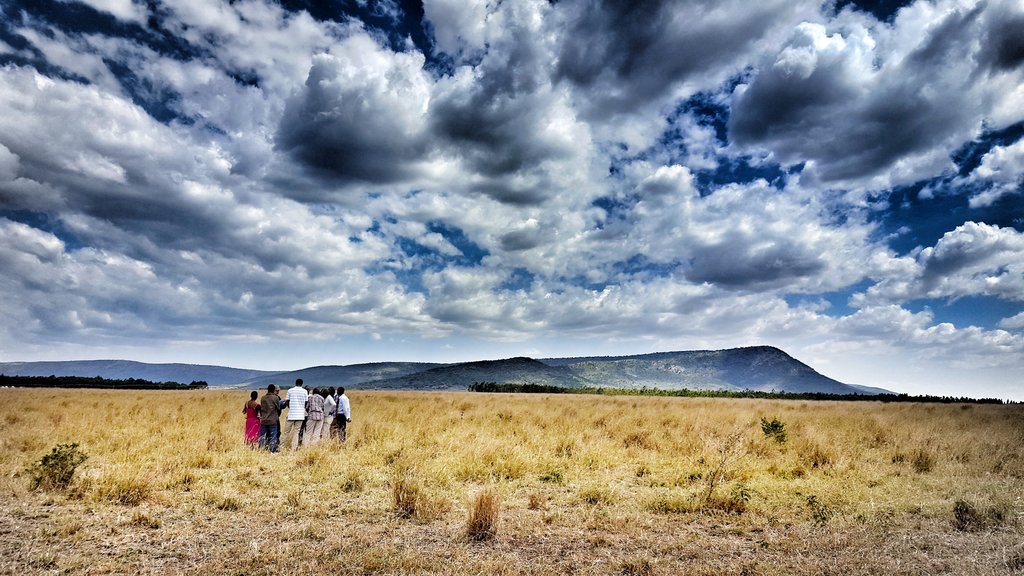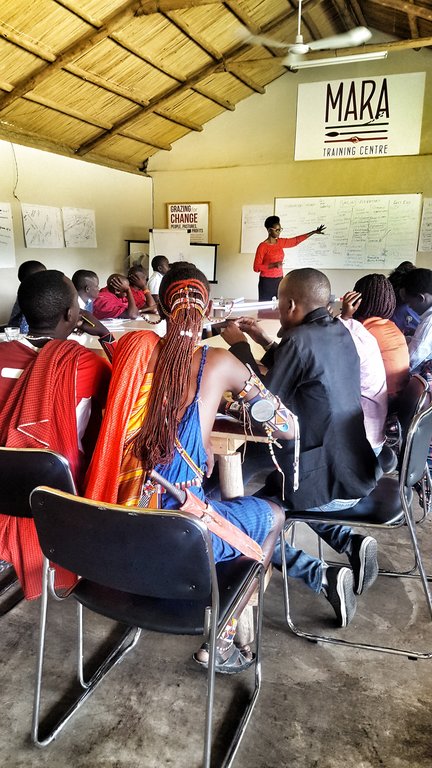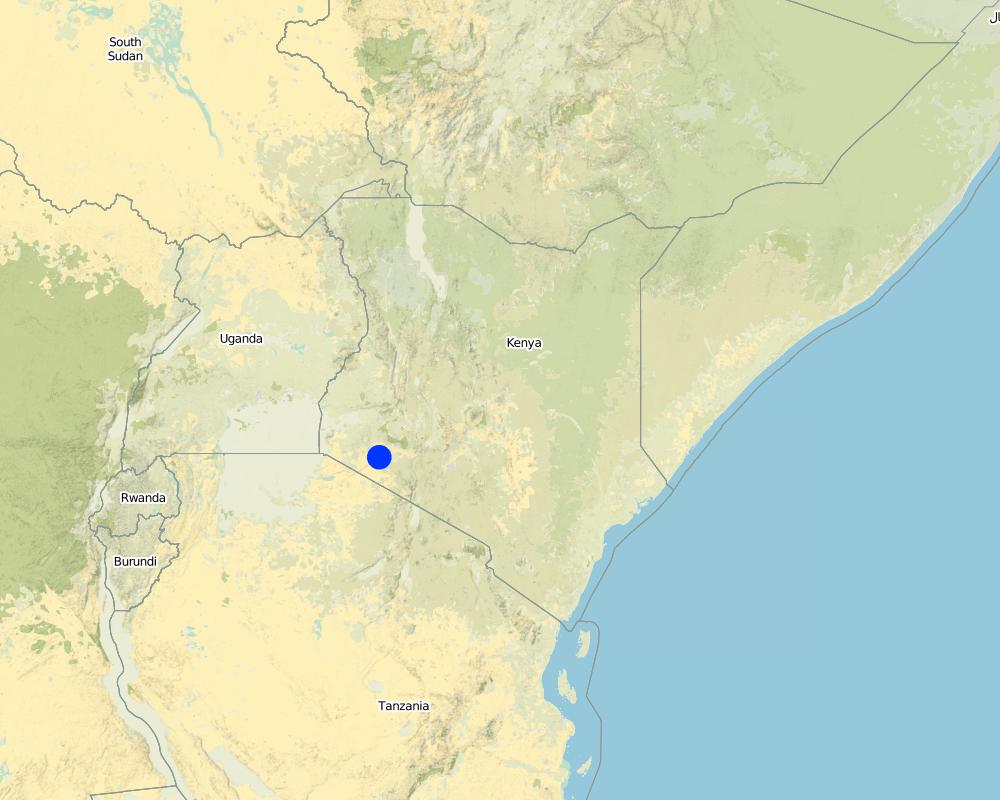Mara Beef: value added beef for for improved rangeland management, livelihoods, and conservation. [เคนยา]
- ผู้สร้างสรรค์:
- การอัพเดท:
- ผู้รวบรวม: Peter Tyrrell
- ผู้เรียบเรียง: Alex Freeland
- ผู้ตรวจสอบ: Donia Mühlematter, Rima Mekdaschi Studer, Hanspeter Liniger
approaches_3425 - เคนยา
- บทสรุปทั้งหมดในรูปแบบของ PDF
- บทสรุปทั้งหมดในรูปแบบของ PDF เพื่อพิมพ์
- บทสรุปทั้งหมดในรูปหน้าเว็บ
- บทสรุปทั้งหมด (ไม่มีการจัดเรียง)
- Mara Beef: value added beef for for improved rangeland management, livelihoods, and conservation. : 30 มีนาคม 2018 (inactive)
- Mara Beef: value added beef for for improved rangeland management, livelihoods, and conservation. : 28 เมษายน 2018 (inactive)
- Mara Beef: value added beef for for improved rangeland management, livelihoods, and conservation.: 10 สิงหาคม 2018 (inactive)
- Mara Beef: value added beef for for improved rangeland management, livelihoods, and conservation.: 3 กันยายน 2018 (public)
ดูส่วนย่อย
ขยายทั้งหมด ย่อทั้งหมด1. ข้อมูลทั่วไป
1.2 รายละเอียดที่ติดต่อได้ของผู้รวบรวมและองค์กรที่เกี่ยวข้องในการประเมินและการจัดเตรียมทำเอกสารของแนวทาง
ชื่อของโครงการซึ่งอำนวยความสะดวกในการทำเอกสารหรือการประเมินแนวทาง (ถ้าเกี่ยวข้อง)
Book project: Guidelines to Rangeland Management in Sub-Saharan Africa (Rangeland Management)1.3 เงื่อนไขที่เกี่ยวข้องกับการใช้ข้อมูลที่ได้บันทึกไว้ผ่านทาง WOCAT
วันที่เก็บรวบรวมข้อมูล (ภาคสนาม):
28/02/2018
ผู้รวบรวมและวิทยากรหลักยอมรับเงื่อนไขเกี่ยวกับการใช้ข้อมูลที่ถูกบันทึกผ่านทาง WOCAT:
ใช่
2. คำอธิบายของแนวทาง SLM
2.1 การอธิบายแบบสั้น ๆ ของแนวทาง
Mara Beef provides a new direct to market sales approach for pastoralist's in Kenya, in an effort to make livestock production more viable to local landowners. This livestock production model is combined with rangeland management and training in an effort to improve pastoral livlihoods, restore rangelands and prevent degradation, and support biodiversity conservation.
2.2 การอธิบายอย่างละเอียดของแนวทาง
การอธิบายอย่างละเอียดของแนวทาง:
Mara Beef is a limited company that raises top quality beef on the edge of the Maasai Mara, Kenya. The Mara Beef company uses their own private land - Naretoi farm - as well as partnering with the Enonkishu Conservancy, to introduce high quality beef breeds to local herds, and sell the beef onto high end supermarkets and restaurants through their own abattoir. There is a large gap in the prime beef market in Kenya, and Mara Beef is trying to fill this gap. Other cuts, not prime cuts, are sold to other less expensive restaurants. The beef is slaughtered and butchered on site. Mara Beef is engaged in many facets of improved rangeland management; the management of Enonkishu Conservancy and Naretoi farms; through the Mara Training Centre, a training hub for rangeland management; and using the Mara Beef network to link pastoral communities with higher value market.
The Enokishu Conservancy is a conservancy created on the edge of the Maasai Mara ecosystem, and is registered under the Maasai Mara Wildlife Conservancies association. The conservancy is 6,000 acres in size, and is owned by 34 landowners who are Maasai pastoralists. Mara Beef has worked with the conservancy to develop a grazing plan for the conservancy. This plan encourages seasonal rotational grazing that allows grasslands to be heavily grazed for short periods, and allowed to recover over long periods. Conflict between predators and cattle is minimised through the use of mobile bomas (enclousers), to protect cattle at night. Integrating wildlife and livestock management into this conservancy aims to i) provide financial benefits through livestock sales from community cattle to build resilience to stochastic events, such as droughts; ii) to increase food security through supplementary income generation; iii) establish sustainable livestock production, to reduce rangeland degradation in an effort to restore and protect ecosystem functioning. This includes the improvement of soils, watershed protection, carbon sequestration and biodiversity conservation. The conservancy pays each land owner to use the land for cattle fattening, and the average land rent paid to each landowner per year is $20 per acre, spending roughly $119,680 per year. Community members also receive conservancy fees from tourists visiting the area.
The Mara Training Centre was established within the Enonkishu training centre to work with communities to help them create and manage the future they desire. The programs build on three principles: building social participation, governance and participation; creating locally implemented and led planned grazing; and stimulating growth in livestock and wildlife based enterprises. The centre runs a variety of training courses including: boot-camps on rangeland management; extension services; and ecological monitoring.
Finally Mara Beef also provides market linkages for the broader pastoral community to premium beef markets. This service lets pastoral communities from across the region to sell beef at a guaranteed price based on both weight and grade at the animals. This price is often significantly higher, on average around $50, than any price offered by local markets, and the lower transport costs and less weight loss on transport also benefit the seller. The emphasis on high quality beef, with high weight requirements, should have a broader affect on pastoral communities, encouraging improved rangeland management for improved livestock productivity. Although this process will be slow. Mara Beef, for example, was granted a loan from the Agricultural Finance Corporation in January 2017 to purchase malnourished cattle during the drought - where Mara Beef bought 1000 animals from105 individuals at an average of $250 per cow.
2.3 รูปภาพของแนวทาง
2.4 วีดีโอของแนวทาง
ความคิดเห็น อธิบายสั้นๆ:
https://www.youtube.com/watch?v=kY_SEDjFDkA
2.5 ประเทศ ภูมิภาค หรือสถานที่ตั้งที่ได้นำแนวทางไปใช้
ประเทศ:
เคนยา
ภูมิภาค/รัฐ/จังหวัด: :
Narok
ข้อมูลเฉพาะเพิ่มเติมของสถานที่ตั้ง:
Maasai Mara
Map
×2.6 วันที่เริ่มต้นและสิ้นสุดของแนวทาง
ระบุปีที่เริ่ม:
2013
ถ้าไม่รู้ปีที่แน่นอนให้ประมาณวันที่ที่ริเริ่มใช้แนวทางนี้ :
น้อยกว่า 10 ปี (เร็วๆนี้)
2.7 ประเภทของแนวทาง
- เป็นนวัตกรรมท้องถิ่นล่าสุด/ นวัตกรรมใหม่
2.8 เป้าหมายหรือวัตถุประสงค์หลักของแนวทาง
- Establish sustainable livestock production and premium market for pastoralists
- Improve grazing management systems through implementation and training
- Conserve and restore biodiversity through an integrate wildlife-livestock approach
2.9 เงื่อนไขที่เอื้ออำนวยหรือเป็นอุปสรรคต่อการนำเทคโนโลยีภายใต้แนวทางนี้ไปปฏิบัติใช้
บรรทัดฐานและค่านิยมทางสังคม วัฒนธรรม ศาสนา
- เอื้ออำนวย
Cultural and traditional ecological knowledge complements the teaching of the Mara Training Centre and the holistic management of Enonkishu conservancy.
การมีไว้ให้หรือการเข้าถึงแหล่งการเงินและบริการ
- เอื้ออำนวย
Provision of a grant (and loan) through the African Enterprise Challange Fund allowed for the improvement of the slaughter house ; livestock purchases from community members; the establishment of Enonkishu conservaiton area; and the building of the Mara Training Centre
Support has also been provided by WWF to help establish the conservation area.
การจัดตั้งระดับองค์กร
- เอื้ออำนวย
Enonkishu is a community onwned conservancy which operates as a legal entity and acts as the interaction point between Mara Beef and the local community.
กรอบแนวทางในการดำเนินการด้านกฎหมาย (การถือครองที่ดิน สิทธิในการใช้ที่ดินและน้ำ)
- เอื้ออำนวย
Enonkishu conservancy has formed under the provisions of the Wildlife Act 2013 to form a conservancy, bringing together private landowners.
ความรู้เกี่ยวกับ SLM การเข้าถึงการสนับสนุนด้านเทคนิค
- เอื้ออำนวย
The creation of the Mara Training Centre acts as a hub of knowledge for information sharing and technical support in rangeland management, offering courses and extension services to communities. This is supported by the Kenya Wildlife Conservancies Association and the Savory Institute.
ตลาด (จัดซื้อปัจจัยนำเข้า ขายผลิตภัณฑ์) และราคา
- เอื้ออำนวย
The creation of the Mara Beef premium market ensures that pastoralists receive improved prices on their livestock compared to normal markets.
3. การมีส่วนร่วมและบทบาทของผู้มีส่วนได้ส่วนเสียที่เกี่ยวข้อง
3.1 ผู้มีส่วนได้ส่วนเสียที่เกี่ยวข้องในแนวทางนี้และบทบาท
- ผู้ใช้ที่ดินระดับท้องถิ่นหรือชุมชนระดับท้องถิ่น
33 landowning families established the Enonkishu Conservancy
They are the landowners and receive benefits from land rents provided by the conservancy. They receive benefits from sale of Enonkishu cattle to Mara Beef, receiving financial returns on the investment. They also receive benefits of conservancy fees from visiting tourists.
- ผู้เชี่ยวชาญ SLM หรือที่ปรึกษาการเกษตร
Savory Insitute
Act as advisers for the Mara Training Centre programs.
- องค์กรพัฒนาเอกชน
Maasai Mara Wildlife Conservancies Association
Acts as the umbrella body for wildlife conservancies in the region, including Enonkishu. They are also responsible for encouraging sustainable rangeland management practices and livestock production within the Mara conservancies.
- องค์การระหว่างประเทศ
African Enterprise Challange Fund (AECF)
Provided funding for the establishment of the conservancy; construction of the mara training centre; and the improvement of the slaughterhouse.
3.2 การเกี่ยวข้องของผู้ใช้ที่ดินระดับท้องถิ่นหรือชุมชนระดับท้องถิ่นในช่วงต่างๆของแนวทาง
| ความเกี่ยวข้องของผู้ใช้ที่ดินระดับท้องถิ่นหรือชุมชนระดับท้องถิ่น | ระบุผู้ที่มีส่วนเกี่ยวข้องและอธิบายกิจกรรม | |
|---|---|---|
| การริเริ่มหรือการจูงใจ | ปฏิสัมพันธ์ | Mara Beef began the process of developing Enonkishu conservancy with the local community members, and found funding and technical capacity to develop the project. |
| การวางแผน | ไม่ลงมือ | The fundraising and planning of the Mara Beef business model, the Mara Training Centre, and Enonkishu was largely supported by members external to the local Maasai community. |
| การดำเนินการ | จ่ายเงินหรือสนับสนุนจากภายนอก | Enonkishu conservancy has a manager supported by Mara Beef that controls grazing management across the conservation area. Mara Beef is owned an operated by non community members. Mara Training Centre involves local communities in the development of the training curriculum - to incorporate traditional knowledge - and during teaching of courses. |
| การติดตามตรวจสอบหรือการประเมินผล | ไม่ลงมือ | Monitoring and evaluation of grazing management, beef prices and community benefits is conducted by Mara Beef staff. |
3.4 การตัดสินใจเลือกใช้เทคโนโลยี SLM
ระบุผู้ที่ทำการตัดสินใจเลือกเทคโนโลยีมากกว่าหนึ่งวิธีไปปฏิบัติใช้:
- ผู้เชี่ยวชาญ SLM เป็นผู้ตัดสินใจหลัก ที่ติดตามให้คำปรึกษากับผู้ใช้ที่ดิน
การอธิบาย:
The farm manager has a long history of working with rangeland management. They consulted with specialists from the region to help advise on the best way to manage grazing on Enonkishu, as well as including community dialogue on best practice.
Mara Beef was set up with advise from business experts to build a sustainable and profitable beef business.
The Mara Training Centre was developed in consultation with landowners and with experts from the fields of conservation and rangeland management.
ระบุว่าการตัดสินใจตั้งอยู่บนพื้นฐานของ:
- การประเมินความรู้ SLM ที่ได้ทำการบันทึกไว้เป็นอย่างดี (การใช้ข้อมูลในการตัดสินใจ)
- ประสบการณ์และความคิดเห็นส่วนตัว (ไม่ได้ลงบันทึกไว้)
4. การสนับสนุนด้านเทคนิค การสร้างขีดความสามารถ และการจัดการด้านความรู้
4.1 การสร้างขีดความสามารถ / การอบรม
ได้มีการจัดอบรมให้แก่ผู้ใช้ที่ดินหรือผู้มีส่วนได้ส่วนเสียคนอื่น ๆ หรือไม่:
ใช่
ให้ระบุว่าใครเป็นผู้ได้รับการอบรม:
- ผู้ใช้ที่ดิน
- เจ้าหน้าที่ภาคสนาม / ที่ปรึกษา
รูปแบบการอบรม:
- กำลังดำเนินการ
- เกษตรกรกับเกษตรกร
- ใช้พื้นที่ทำการสาธิต
- จัดการประชุมสู่สาธารณชน
ความคิดเห็น:
In 2015, 40 members of the Enonkishu Conservancy community, went on a training trip to Ol Maisor, Sosian, NRT, LEWA, Il Ngwesi and Westgate Conservancy, to learn about community conservation and rangeland management.
Training is provided on a continual basis to both local landowners and pastoralists from across the region through the Mara Training Centre. In the first 6 months of operation, over 600 people attended training courses.
4.2 การบริการให้คำแนะนำ
ผู้ใช้ที่ดินมีการเข้าถึงการรับบริการให้คำปรึกษาหรือไม่:
ใช่
ระบุว่ามีบริการให้คำปรึกษาหรือไม่:
- ไปเยี่ยมชมสถานที่
- ที่ศูนย์ถาวร
การอธิบาย/แสดงความคิดเห็น:
Mara Training Centre provides advise and courses both at the training centre, located in the Mara, and through outreach programs to pastoralists across the region.
4.3 การเสริมความแข็งแกร่งให้กับสถาบัน (การพัฒนาองค์กร)
สถาบันได้รับการจัดตั้งขึ้นมาหรือเสริมความแข็งแกร่งโดยแนวทางนี้หรือไม่:
- ใช่ อย่างมาก
ระบุระดับของสถาบันที่ได้รับการเสริมความแข็งแกร่งหรือจัดตั้งขึ้นมา:
- ท้องถิ่น
อธิบายถึงสถาบัน บทบาทและความรับผิดชอบ สมาชิก เป็นต้น:
The Enoonkishu conservancy was established with 50 landowners to protect and manage their land in a more sustainable and profitable way.
ระบุประเภทของการให้ความช่วยเหลือสนับสนุน:
- ด้านการเงิน
- การสร้างขีดความสามารถ / การอบรม
ให้รายละเอียดเพิ่มเติม :
Support was provided by several conservation NGOs, including the African Conservation Centre and WWF to support the initial costs of motorbikes and wildlife rangers within the Enonkishu conservation area. Further funding from African Enterpise Challange Fund was used to pay lease fees to the Enonkishu community and further equip the wildlife rangers and managers.
4.4 การติดตามตรวจสอบและประเมินผล
การติดตามตรวจสอบและประเมินผลเป็นส่วนหนึ่งของแนวทางหรือไม่:
ใช่
ความคิดเห็น:
Mara Beef monitors its purchase and sales records, as well as purchase weight and sale weight .
Enonkishu monitors its rangeland health using (?)
ถ้าตอบว่าใช่ แสดงว่าการจัดเตรียมเอกสารนี้มุ่งหวังที่จะเอาไปใช้สำหรับการติดตามตรวจสอบและประเมินผลใช่หรือไม่:
ไม่ใช่
4.5 การวิจัย
การวิจัยเป็นส่วนหนึ่งของแนวทางหรือไม่:
ไม่ใช่
5. การสนับสนุนด้านการเงินและวัสดุอุปกรณ์
5.1 ระบุงบประมาณประจำปีสำหรับแนวทาง SLM นี้
ถ้าหากว่างบประมาณประจำปีไม่เป็นที่ทราบแน่นอน ให้ระบุช่วงลงไป:
- > 1,000,000
แสดงความคิดเห็น (แหล่งของการระดมทุน ผู้บริจาคคนสำคัญ):
The initial budget for this project was large (>$500,000). This large amount of funding was needed to establish Enonkishu conservation area through payment of land rent, the purchasing of equipment for the Mara Beef slaughterhouse and distribution network, and the construction of the Mara Training Centre.
The company has a large turnover each year, purchasing over $850,000 of cattle in 2017.
5.2 การสนับสนุนด้านการเงิน / วัสดุอุปกรณ์ให้แก่ผู้ใช้ที่ดิน
ผู้ใช้ที่ดินได้รับการสนับสนุนด้านการเงิน / วัสดุอุปกรณ์ไปปฏิบัติใช้เทคโนโลยีหรือไม่:
ใช่
ถ้าใช่ ให้ระบุประเภทของการสนับสนุน เงื่อนไขและผู้จัดหามาให้:
Landowners of Enonkishu conservancy are provided with land rent, roughly $3,390 per landowner per year.
5.3 เงินสนับสนุนสำหรับปัจจัยนำเข้า (รวมถึงแรงงาน)
- โครงสร้างพื้นฐาน
| ระบุปัจจัยนำเข้าที่ได้รับการสนับสนุน | เห็นด้วยระดับไหน | ระบุเงินสนับสนุน |
|---|---|---|
| Slaughter house improvement | ได้รับการช่วยเหลือทางการเงินแบบเต็ม | Grant from AECF |
- อื่น ๆ
| อื่นๆ (ระบุ) | เห็นด้วยระดับไหน | ระบุเงินสนับสนุน |
|---|---|---|
| Mara Training Centre | ได้รับการช่วยเหลือทางการเงินแบบเต็ม | Grant from AECF |
ความคิดเห็น:
The Enonkishu conservancy land rent was also paid by an AECF grant for the first two years of establishment.
5.4 เครดิต
มีการจัดหาเครดิตมาให้ภายใต้แนวทาง SLM หรือไม่:
ไม่ใช่
5.5 แรงจูงใจหรือเครื่องมืออื่น ๆ
แรงจูงใจหรือเครื่องมืออื่น ๆ ได้ถูกนำไปใช้ส่งเสริมการใช้เทคโนโลยี SLM หรือไม่:
ไม่ใช่
6. การวิเคราะห์ผลกระทบและการสรุป
6.1 ผลกระทบของแนวทาง
ทำให้ผู้ใช้ที่ดินระดับท้องถิ่นมีอำนาจขึ้น ปรับปรุงการเข้าร่วมของผู้มีส่วนได้ส่วนเสียให้ดีขึ้นหรือไม่:
- ไม่ใช่
- ใช่ เล็กน้อย
- ใช่ ปานกลาง
- ใช่ อย่างมาก
The approach established the Enonkishu conservancy, providing them with a platform for better land management, conservation and revenue generation.
ช่วยให้ผู้ใช้ที่ดินนำเอาเทคโนโลยี SLMไปใช้และบำรุงรักษาสภาพไว้ได้หรือไม่:
- ไม่ใช่
- ใช่ เล็กน้อย
- ใช่ ปานกลาง
- ใช่ อย่างมาก
The approach provides training and outreach through the Mara Training Centre
ระดมกำลังหรือปรับปรุงการเข้าถึงแหล่ง เงินทุนสำหรับการดำเนินการ SLM หรือไม่:
- ไม่ใช่
- ใช่ เล็กน้อย
- ใช่ ปานกลาง
- ใช่ อย่างมาก
The approach improved access for funding to the Enonkishu conservation area.
ปรับปรุงความรู้และความสามารถของผู้ใช้ที่ดินในการดำเนินการ SLM หรือไม่:
- ไม่ใช่
- ใช่ เล็กน้อย
- ใช่ ปานกลาง
- ใช่ อย่างมาก
Over 600 pastoralists trained in rangeland management and livestock production in the first 6 months of the establishment of the Mara Training Centre.
ปรับปรุงความรู้และความสามารถของผู้มีส่วนได้ส่วนเสียคนอื่น ๆ ให้ดีขึ้นหรือไม่:
- ไม่ใช่
- ใช่ เล็กน้อย
- ใช่ ปานกลาง
- ใช่ อย่างมาก
Mara Beef organised a conference in Nariobi, called Grazing for Change, with other 300 delegates debating the role of livestock production in conservation and development.
ทำให้ผู้ใช้ที่ดินระดับท้องถิ่นมีอำนาจขึ้น ปรับปรุงการเข้าร่วมของผู้มีส่วนได้ส่วนเสียให้ดีขึ้นหรือไม่:
- ไม่ใช่
- ใช่ เล็กน้อย
- ใช่ ปานกลาง
- ใช่ อย่างมาก
The approach established the Enonkishu conservancy, and its links with Mara Beef.
ทำให้กลุ่มด้อยโอกาสมีอำนาจทางสังคมและเศรษฐกิจหรือไม่:
- ไม่ใช่
- ใช่ เล็กน้อย
- ใช่ ปานกลาง
- ใช่ อย่างมาก
In 2017 Mara Beef provided an estimated benefit of $103,600 to livestock owners (estimated at at a $50 increase in value per cattle sold to Mara Beef as opposed to other markets). In 2017 Mara Beef also bought cattle from an Agricultural Finance Corporation drought contingency fund. Mara Beef bought 1000 animals off 105 farmers at an average of $250 each cow. These cattle would have certainly died due to lack of food. Therefore, a net Benefit of $ 250 per (cow) multiplied by 1000 cows spread over 105 farmers. So, a net benefit of $250,000 divided by 105 farmers. $2380 for 105 farmers
The approach allows pastoralists to sell directly to market, rather than losing value through several steps of brokers before it reaches a point of sale in Nairobi.
6.2 แรงจูงใจหลักของผู้ใช้ที่ดินเพื่อที่จะนำ SLM ไปปฏิบัติใช้
- การผลิตที่เพิ่มขึ้น
In Enonkishu conservancy the improved grazing and livestock management increase the income each individual households,
- กำไร (ความสามารถ) อัตราส่วนค่าใช้จ่ายต่อผลประโยชน์ที่เพิ่มขึ้น
For pasotralists that sell to Mara Beef they gain as much as $50 per cow sale , due to lower transport costs, less weight loss, and a slighter higher price of purchase paid by Mara Beef (5%)
- การเสื่อมของที่ดินลดลง
Improved grazing management in Enonkishu will reduce land degredation.
The training of pastorlaists from across the country should have an impact of reduced rangeland degradation across the country.
- การจ่ายเงินหรือการช่วยเหลือ
Land rent payment for each member of Enonkishu conservancy. Roughly $85,000 per year to all members.
- ความรู้และทักษะ SLM ที่เพิ่มพูนขึ้น
The development of the Mara Training Centre creates a hub of knowledge, courses, and extension services for rangeland managers.
6.3 ความยั่งยืนของกิจกรรมของแนวทาง
ผู้ใช้ที่ดินสามารถทำให้สิ่งต่างๆ ที่ได้ปฏิบัติใช้โดยแนวทางนี้ยั่งยืนได้หรือไม่ (โดยไม่มีการสนับสนุนจากภายนอก):
- ไม่แน่ใจ
ถ้าตอบว่าไม่หรือไม่แน่ใจ ให้ระบุและแสดงความคิดเห็น :
The Mara Beef model is supported by large captial investment and is not landowner run.
The Enonkishu conservancy is heading towards creating a self sustaining model of operations, without external support.
6.4 จุดแข็งและข้อได้เปรียบของแนวทาง
| จุดแข็ง / ข้อได้เปรียบของแนวทางในทัศนคติของผู้ใช้ที่ดิน |
|---|
| Provision of knowledge on improved livestock production and rangeland managment |
| Provision of an improved market for cattle |
| จุดแข็ง / ข้อได้เปรียบของแนวทางในทัศนคติของผู้รวบรวมหรือวิทยากรหลัก |
|---|
| Creation of a production oriented approach provides the potential for improved rangeland management across the region. With pastoralists beginning to produce fewer, higher quality cattle for sale, through efforts to improve grazing management across the region. |
| This approach has a huge potential to be up-scaled to support community conservation through a sustainable and well managed livestock production and rangeland management model. |
| Mara Beef has also been a key catalyst of conversation across SSA relating to sustainable rangeland management, livestock production, and mixed livestock-wildlife ecosytems. |
6.5 จุดอ่อน / ข้อเสียเปรียบของแนวทางและวิธีในการแก้ไข
| จุดอ่อน / ข้อเสียเปรียบในทัศนคติของผู้ใช้ที่ดิน | สามารถแก้ไขปัญหาได้อย่างไร |
|---|---|
| Lack of ability to practice individual herding within the conservation area | Use of tradtional Maasai community structures to enforece grazing rules |
| จุดอ่อน / ข้อเสียเปรียบในทัศนคติของผู้รวบรวมหรือวิทยากรหลัก | สามารถแก้ไขปัญหาได้อย่างไร |
|---|---|
| The focus on cattle present a great opportunity, but sheep and goats also need a better, readily available market to increase off-take. | Building of a pack-house in Nairobi for goat meat for the export market, to compete with other markets. |
| Lack of impact on improved rangeland management beyond the Enonkishu area, especially when livestock is purchased from all over the country. There is also a lack of high quality cattle. | Establish links with other conservancies and landowner groups to encourage improved grazing management, producing higher quality cows. |
7. การอ้างอิงและการเชื่อมต่อ
7.1 วิธีการหรือแหล่งข้อมูล
- ไปเยี่ยมชมภาคสนาม การสำรวจพื้นที่ภาคสนาม
- การสัมภาษณ์กับผู้ใช้ที่ดิน
- การเก็บรวบรวมมาจากรายงานและเอกสารที่มีอยู่
ลิงก์และโมดูล
ขยายทั้งหมด ย่อทั้งหมดลิงก์
ไม่มีลิงก์
โมดูล
ไม่มีโมดูล






